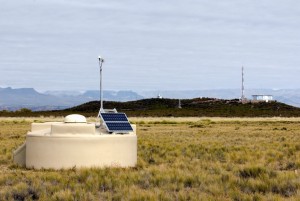
PhD. Gina Isar, Research Scientist tear II at the Institute of Space Science and institutional representative (ISS) at the Pierre Auger Observatory, will hold a seminar at the Polytechnic University of Bucharest on 5 March 2015. She will talk about the international collaboration that ISS joined as a full member in March 2014.
During the event, Isar will discuss topics such as astroparticle physics, innovative techniques for detection, advanced computing technologies, but will talk also about the opportunities that young people may have at ISS within the Pierre Auger collaboration.
Participants at the workshop will have the opportunity to learn directly from PhD. Gina Isar more about cosmic particles, their illusive origin, how they are produced and accelerated to energies much higher than those the LHC -CERN Geneva can reach to study fundamental physics.
The Pierre Auger Collaboration aims to reveal the mysteries of cosmic rays of ultra-high energies by gathering scientists from across the globe and using complementary detection techniques over an area of 3000 square kilometers, 10 times larger than the area of Bucharest. Dr. Gina Isar is among the 500 Auger contributors together with other Romanian researchers from the Institute of Physics and Nuclear Engineering – Horia Hulubei, the Polytechnic University of Bucharest, Bucharest University and the Institute of Space Science (ISS).
About the lecturer:
Isar P. G. graduated from the Faculty of Physics, University of Bucharest (class of 2003) and later was employed at ISS. She continued with master studies at the University of Bucharest and University of Bonn via Erasmus (class of 2005), then obtained her doctorate with a DAAD-Helmholtz scholarship at the Karlsruhe Institute of Technology (KIT), Germany (class of 2010). Since returning home in 2013 she completed a postdoctoral national project at ISS, and in 2015 she is about to finalise a national partnership project. Since 2006 she is a member of the cosmic radiation international collaborations of the KASCADE-Grande and LOPES experiments and since 2012 she joined the Pierre Auger Observatory collaboration. More information can be found here.
